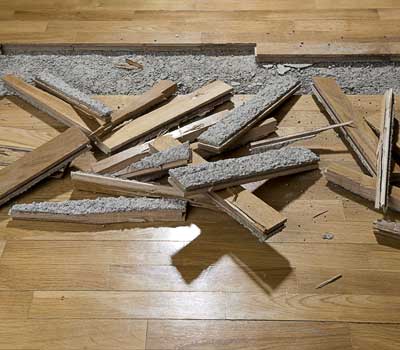Timber floors add a touch of elegance and warmth to any home, but they can also show signs of wear and damage over time. When it comes to repairing timber floors, homeowners often face the dilemma of whether to tackle the project themselves or hire a professional. Each option has its pros and cons, and the right choice depends on various factors, including the extent of the damage, your skill level, and your budget. This blog will explore what you need to know about DIY and professional timber floor repair to help you make an informed decision.
Assessing the Damage
Before deciding on DIY or professional repair, it’s crucial to assess the extent of the damage to your timber floors. The level of damage can depend on location, as well as many other factors. For instance, for timber floor repair in Sydney, you must evaluate for damage due to mould, scuff marks, etc. However, common issues include the following:
– Scratches and Scuffs: Minor surface scratches that don’t penetrate the wood.
– Dents and Gouges: Deeper marks that may require more extensive repairs.
– Water Damage: Warping, discolouration, or soft spots caused by moisture.
– Loose or Squeaky Boards: Boards that have come loose from the subfloor or make noise when walked on.
DIY Timber Floor Repair
Pros of DIY Repair
– Cost Savings: The most significant advantage of DIY repair is saving money. You can avoid labour costs and potentially save on materials by sourcing them yourself.
– Flexibility: You can work on the repairs at your own pace and on your schedule. This flexibility is especially useful for minor fixes that don’t require immediate attention.
– Satisfaction: Completing a repair project yourself can be highly rewarding and give you a sense of accomplishment.
Cons of DIY Repair
– Skill and Knowledge Required: Timber floor repair requires a certain level of skill and knowledge. Mistakes can lead to further damage, which may end up costing more to fix.
– Time-Consuming: DIY repairs can take a lot of time, especially if you lack experience. What might take a professional a few hours could take you days or even weeks.
– Tools and Materials: You may need to invest in specialised tools and materials that you might not already have, which can offset some of the cost savings.
When to DIY
– Minor Scratches and Scuffs: Light sanding and refinishing can often fix surface flooring scratches.
– Small Dents: Wood fillers and touch-up kits can repair minor dents.
– Loose Boards: Securing loose boards with nails or screws can be a straightforward fix.
Professional Timber Floor Repair
Pros of Professional Repair
– Expertise and Experience: Professionals have the expertise and experience to handle a wide range of repairs efficiently and effectively. They can accurately assess the damage and determine the best course of action.
– Quality Results: Professional repairs are more likely to result in a high-quality finish that blends seamlessly with the rest of the floor.
– Time-Saving: Hiring a professional can save you significant time and hassle. They have the tools and skills to complete the job quickly and correctly.
Cons of Professional Repair
– Cost: The most significant drawback of hiring professionals is the cost. Professional repair services can be expensive, especially for extensive damage.
– Scheduling: You may need to work around the professional’s schedule, which can sometimes cause delays.
When to Hire a Professional
– Extensive Damage: Water damage, deep gouges, or widespread issues that affect the structural integrity of the floor should be handled by professionals.
– Restoration Projects: For older homes or antique timber floors that require careful restoration, seeking professional expertise is essential.
– Insurance Claims: If the repair is part of an insurance claim, it’s often necessary to use a professional service to ensure the work meets the required standards.
Making Your Decision
When deciding between DIY and professional timber floor repair, it is essential to consider the following:
– Your Skill Level: It is important to objectively evaluate your abilities. If you have experience with home repairs and feel confident in your skills, DIY might be a viable option.
– The Extent of the Damage: For minor cosmetic issues, DIY can be cost-effective and sufficient. For major repairs, professional help is usually the best choice.
– Budget: Weigh DIY’s cost savings against the potential risks and additional costs if things go wrong. Sometimes, investing in professional repair is the most cost-effective solution in the long run.
– Time: Consider how much time you can realistically devote to the repair. If your time is limited, hiring a professional can save you a lot of hassle.
In Conclusion
Both DIY and professional timber floor repair have their own unique advantages and disadvantages. DIY repairs can save money and provide personal satisfaction but require skill and time. On the other hand, professional repairs ensure high-quality results and are ideal for extensive damage but come at a higher cost. By assessing the extent of the damage, your skill level, budget, and time constraints, you can make an informed decision that best suits your needs. Ultimately, whether you choose to DIY or hire a professional, the goal is to restore the beauty and functionality of your timber floors.
